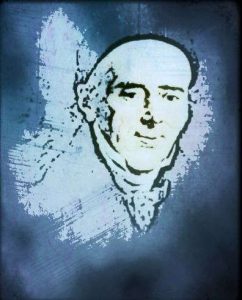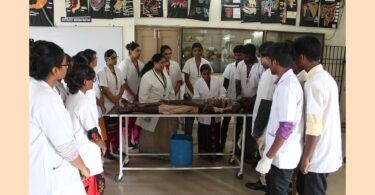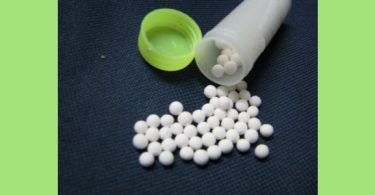
Unfortunately, there is a misconception, that by paying attention to the totality of the case, Hahnemann ignored the actual disease the patient was suffering from. Even nowadays among some homeopaths, there is a way of thinking that in Homeopathy “disease” is not important. As a matter of fact, if we review Hahnemann’s teachings thoroughly we notice that Hahnemann was not against consideration of disease. On the contrary, he stated that knowledge of disease is one of the essential elements. He also taught that the “totality of the symptoms” is the only aspect of the disease laid open before the eyes of the healing artist; this is the chief part of the disease which the physician needs to dig out for purposes of curing.
Dr. C. Peschier (one of Hahnemann’s students -1832) said that “Hahnemann writes punctually the totality of symptoms, or entire group of sufferings of the patient. On the completion of his record, the symptoms of the disease are most carefully arranged to correspond with the indications of the medicine he deems most appropriate to the case; but in reaching this conclusion he neither confides in his memory, nor relies solely upon his long experience, but has constantly before him the Materia Medica. As he pursues this course towards every patient we can readily perceive how completely and incessantly his time must be occupied by the history of his consultations”.
Patient’s lifestyle, home atmosphere, diet and social interactions were also assessed by Hahnemann. In this regard, as published in the Friend of Health pamphlet in 1792, Dr. Hahnemann said: “There can be no health without exercise. Strengthening diet, wholesome air and exercise, together with amusement to the mind, are indispensable, and everyone knows their power and can employ them. Fresh air, fresh water, and free movement are as a general rule, always the preliminary conditions of well-being. Next to food, exercise is the most essential requirement. Exercise and good air alone set all the humours in our body in motion to fill their appointed places, and compel every secreting organ to give off its specific secretions and give power to the muscles”.
Hahnemann also advocated that “Social Hygiene is as important as Personal Hygiene; every street should be built at least 20 paces wide, so that the air could blow freely through it, and behind each house there should be a yard and a little garden; in this way the air could easily be renewed behind the houses. In prisons, it is cruel to lock up several prisoners together, without allowing at least 500 cubic feet of air space to each. After the release of an inmate, a prison should be thoroughly cleaned and disinfected.”
Case Taking – It’s an Art
Hahnemann taught that a homeopath must take the trouble to inquire about all the circumstances or conditions of the patient in order to be able to select a suitable remedy. Here is a very short example of the actual questions in a patient’s case taking that Hahnemann explored in his investigation:
Is there any peculiarity in the state of the patient when he/she sleeps? Does the patient sigh, moan, speak, or cry out? Does he/she startle in sleep? Does he /she snore? Does the patient lie on his/her back only, or on which side does he/she lay? Does he/she cover himself/herself up close, or does he/she throw off the bed-covering? Does the patient easily awake, or sleep soundly? How does he/she feel on waking? How often does this or that circumstance occur, and on what occasion? Is it when the patient is sitting up, lying down, standing up, or when he/she is moving about? Does it come on merely when he/she has been fasting, or at least early in the morning, or simply in the evening, or after food? When did the shivering come on? Was it merely a sensation of cold, or was he/she actually cold at the time? In what part of the body did the patient feel cold? Was his/her skin warm when he/she complained of being cold? Did the patient experience a sensation of cold without shivering? Did he/she feel heat without the face being flushed? What parts of the body were warm to the touch? Did the patient complain of heat without his/her skin being warm? How long did the sensation of cold or that of heat continue? When did the thirst come on? During the cold or heat? Or was it before or after? Was the thirst intense? What did the patient ask for to drink? When did the perspiration come on? Was it at the commencement or at the expiration of the heat? What space of time elapsed between the heat and perspiration? Was it when sleeping or waking that it manifested itself? Was it strong or otherwise? Was the perspiration hot or cold? In what parts of the body did it break out? How did it smell? What did the patient complain of before or during the cold, during or after the heat, during or after the perspiration?
In my humble opinion, it does not matter what methodology you as a homeopath adopt in taking a case, the Hahnemannian method or otherwise, but it is important to remember that Hahnemann urges his fellow homeopaths to familiarize themselves with careful thinking, by the study of mathematics, practicing minute-observation, by the study of natural history, and when possible, also by the art of drawing for the purpose of sharpening the sight to close observation!
As always God bless Homeopathy.






Dear Reader
After reading this article, the question still is the same: How did Hahnemann take his cases?
Depending on his own knowledge and experience, his case taking changed significantly.
The following dissertation gives a detailed insight:
Die Entwicklung von Samuel Hahnemann’s aerztlicher Praxis anhand ausgewaehlter Krankengeschichten / Hanspeter Seiler / 1988 Haug Verlag.
Some late cases are found here:
http://www.facebook.com/groups/302151859854069/
Hans Weitbrecht
HOMEOPATH
Thanks for this article and Hans comment too.
It is always one of the questions students ask when observing. How did you get the client to disclose that information? How did you get to get them to go there?
My observation is that homeopathy is not a judge of the homeopath and each of us find ways to get homeopathy to work. Each of us will develop with careful observation of that what is to be cured and that which works. Some will stray away from homeopath and use other things as well. This always seems to be more acceptable to other homeopaths than those homeopaths that develop new methods (more probably rediscover old methods).
Hahnemann fif most of his work with potencies of 30 or less. He developed the LM’s so that they could be repeated often. Kent would open a case with SULPHUR and advised that to get the epidemic remedy you knock on one door and take a symptom, the next door and take another and the third door to take a third this remedy will give you the remedy for 80% of the outbreak.
I don’t raise these points to distract from this excellent article but just to affirm to all those out there that want to take homepathy forward. Homeopath is boundless in its application, just check that where you are going would stand Hahnemann’s test org 1-8 and 153. We have barely touched the tip of the iceberg (Oh that’s a Robert Davidson Method!).
i am always rueing the dearth of true homoeopaths like Dr Hahnemann, Kent and the like!
I always low potency 30 apply the patients, and 100% result obtain the patients